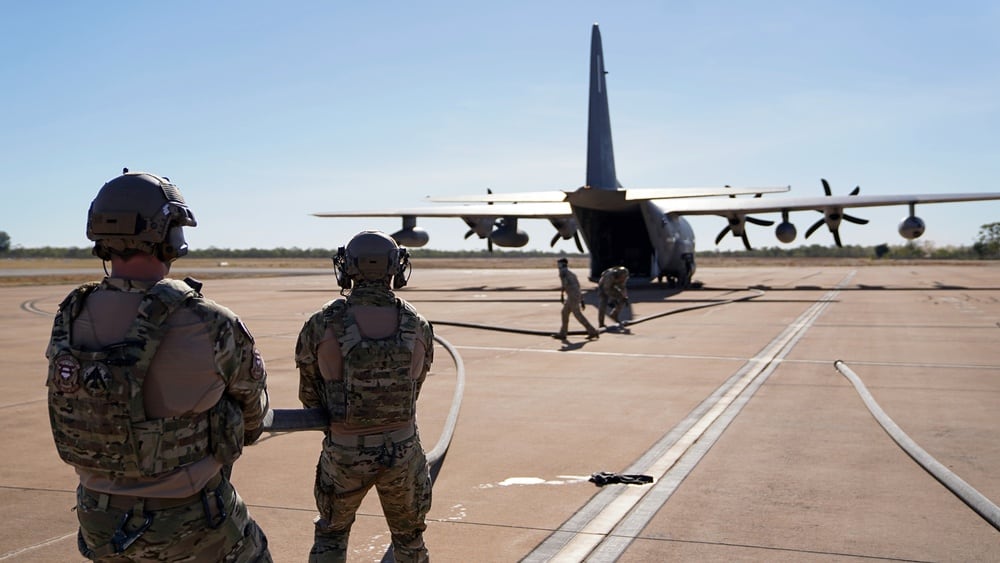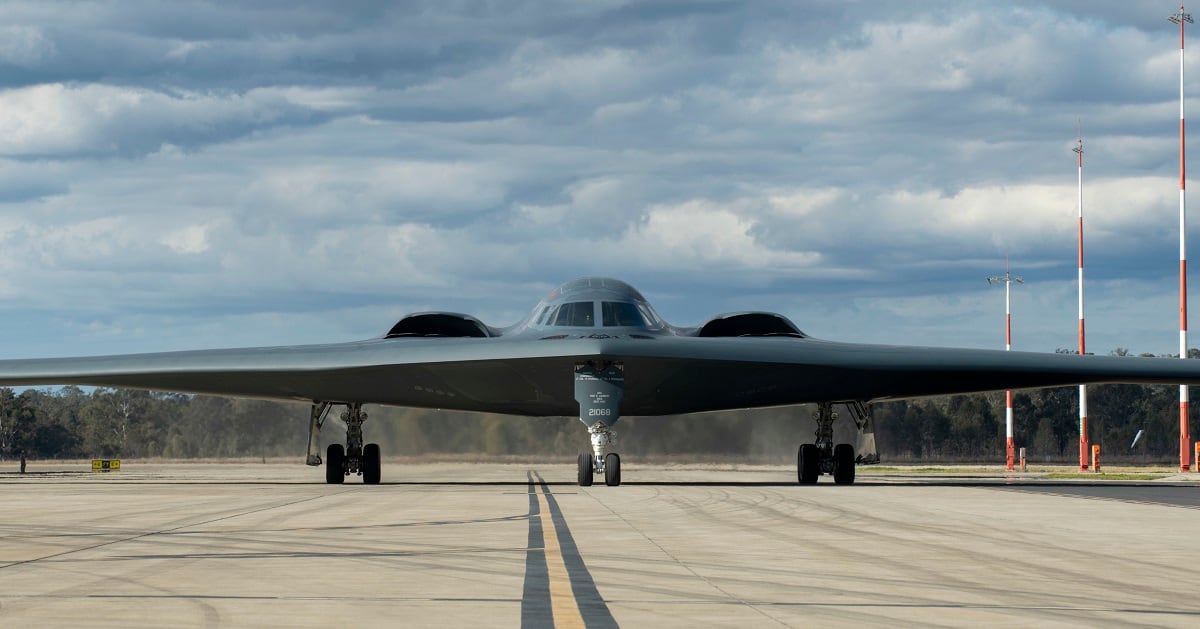Two more Air Force B-2 Spirit stealth bombers from the 509th Bomb Wing out of Whiteman Air Force Base arrived at Royal Australian Air Force Base Amberley July 12 as part of a Pacific Air Forces Bomber Task Force deployment to conduct training and strategic deterrence missions in the region.
It is the second pair of B-2 aircraft and aircrew to arrive in Australia for July’s rotational BTF in support of the Enhanced Air Cooperation Initiative under the force posture agreement between the two countries. The first two arrived July 10. The deployed airmen also include members of the 131st Bomb Wing, Missouri Air National Guard.
The deployment aligns with the National Defense Strategy’s objectives of strategic predictability and operational unpredictability. The BTF enables different types of strategic bombers to operate forward in the Indo-Pacific region from a broad array of overseas and continental U.S. locations.
RELATED

“Training and operating with our Australian partners has been an absolute blast,” said Lt. Col. Andrew Kousgaard, commander of the 393rd Expeditionary Bomb Squadron, in a news release. “Since our advance team hit the ground over a week ago, U.S. Airmen have integrated with their Australian counterparts in every specialty: fuels, logistics, maintenance, aviators, you name it.
“We have plans to conduct engines-running refueling with Australian equipment, air refuel with Australian KC-30s … the list goes on, and the entire deployed squadron is really excited about it,” said Kousgaard. “It’s important for us to demonstrate that we can accomplish that mission from diverse locations in the largest combatant command in the world, and that’s exactly what we’re doing here.”

The last time B-2s deployed to U.S. Indo-Pacific Command as part of a task force was nearly two years ago, in August 2020.
Tensions in the Indo-Pacific region have been rising amid a host of concerns, ranging from international rights of passage through the South China Sea to worries that a conflict with China could erupt over Taiwan. In April, China conducted military exercises to protest six U.S. lawmakers’ meeting with the president of Taiwan to express support for the democratic island. Then, in May, President Joe Biden said the U.S. would intervene militarily if China invaded Taiwan, as its leaders have threatened to do.
His statement represented a significant departure from the 1979 Taiwan Relations Act that governs U.S. relations with the island, which does not require the U.S. to step in militarily to defend Taiwan if China invades, but makes it American policy to ensure Taiwan has the resources to defend itself. Biden later walked back the statement a bit, saying the U.S. policy of “strategic ambiguity” had not changed, without specifically saying he had misspoken.
“This is the most consequential theater with the most challenging security issues … and advancing our interoperability with critical allies like Australia is critical to maintaining a free and open Indo-Pacific,” said Navy Adm. John C. Aquilino, the head of USINDOPACOM, in a news release. “There are many aspects that are going on daily to continue to move the security relationship forward in a positive way to provide deterrence, prevent war, and maintain peace and stability within the region.”
Kousgaard called the BTF deployment essential.
“The only way to learn and improve is to actually deploy and practice,” he said. “We simply cannot operate effectively by ourselves in this environment, and learning to effectively integrate with our partners is absolutely critical to success. We’re training against that ‘tyranny of distance,’ alongside our Australian partners on this deployment, and that experience is truly invaluable.”
The U.S. and Australia have long been strengthening relationships and interoperability through exercises like this and via technology cooperation. In March, a single B-2 flew to Amberly and conducted interoperability training missions along the way with both RAAF and USAF fighter aircraft.
“This is our most important relationship that we have in the Indo-Pacific region,” RAAF Air Vice-Marshal Joe Iervasi, air commander Australia, said in March. “We have enduring bonds extending back for decades and we share common values and interests, and we will continue to collaborate and keep this partnership strong.”




